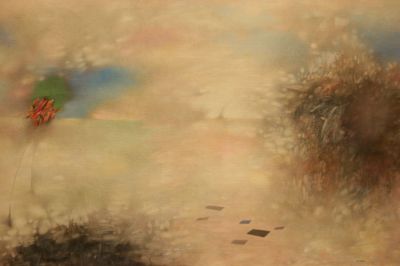The first meeting of Romualds Geikins with visual arts took place in his childhood. While still a schoolchild, he helped graphic designers at the Palace of Culture in the Latvian city of Daugavpils, where his serious fascination with drawing began. Later he graduated from the Art Academy of Latvia and has been painting pictures up to now.

Since the 1970s the artist Geikins has been a regular participant in exhibitions of Latvian watercolourists and international Baltic art exhibitions.
The art of Romualds Geikins is based on his striving to reveal the interaction of different phenomena in time and space. Favourite themes of the artists are the interpenetration of different epochs and cultures, interrelations of an individual with society and authorities. These favourite themes go through all periods of his creative art.
The current exposition presents the works created by the artist during the period from 1960 up to nowadays. His early period works – miniature figurative compositions with a philosophical subtext – are painted in the classical watercolour technique. One can see grotesquely interpreted archetypes of social realism in his works of the 1970s-1980s – a worker, a party leader, a sportsman… Since the late 1980s the artist actively uses a mixed technique by applying pencil hatching on top of a watercolour picture. In this way the artist achieves a play of colour which creates an illusion of surface illumination.
Oil painting also occupies an important place in his art. He prefers the brightness and matt surface of acrylic paints which suit the creative concept of his paintings, where a metaphor is combined with surrealistic methods, and daily life images with a world of fantasy.
At times it seems that his watercolours and paintings resemble a rebus, where decoding of the conceptual and socio-political subtext presupposes the availability of certain erudition and even intellectual effort. Such paintings stimulate the spectator to enter an intellectual game with images of the Russian icon, antique and eastern culture, causing associations with the artistic heritage of Paul Delvaux, Marc Chagall, Pavel Filonov and Franz Kafka.
Since the 1990s philosophical ideas in the art of Geikins are often linked with the poetic-intuitive perception of life; the palette of transparent colours is illuminated, thus filling his paintings with a new sense and lyrical spirituality.
Works of the master can be found in collections of the Latvian National Museum of Art, the Cesis Museum of History and Art, the Daugavpils Museum of Regional History and Art, the collection of the Latvian Artists’ Union, as well as in private collections in Germany, the USA, Great Britain, Belgium and other countries.